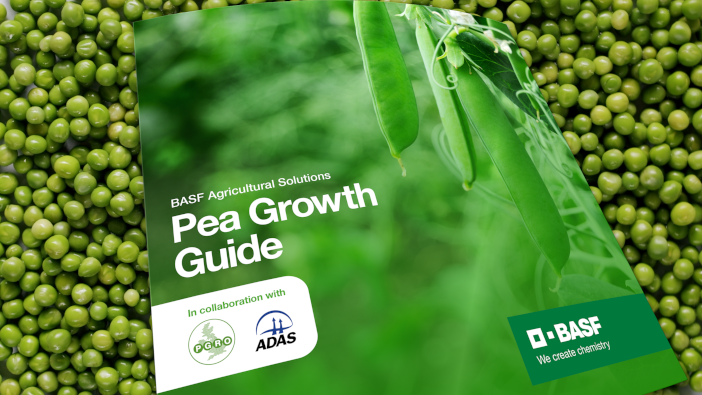The Processors and Growers Research Organisation (PGRO), ADAS and BASF have launched a free, comprehensive booklet, available both online and in print, to share practical insights for growers.
The 56-page resource will include the latest research and data, including findings from the Pea Yield Enhancement Network (YEN), as well as topics such as yield determination and potential, canopy expansion and light interception.
“It’s easy to get passionate about peas,” says Dr Natalie Wong, break crop campaign manager at BASF. “Researchers estimate that peas could yield 7-8t/ha on light soils and 9-10t/ha on water retentive soils, so it is a crop with a lot of potential.
“Thanks to organisations like PGRO and initiatives like the Pea YEN, and through our own R&D, we have increasingly gained deeper insights into how to enhance their performance in the field. This new Growth Guide puts that very latest information into the hands of growers and will hopefully help to bridge the yield gap.”
Becky Howard, research and development manager at PGRO, adds: “Peas can be competitive and profitable against other arable crops in the rotation, and with the different types and markets, there is flexibility too. As a home-grown protein source, both combining and vining peas, bring benefits that extend well beyond the farm gate. They are part of the solution to one of agriculture’s biggest challenges – reducing carbon emissions.”
Analysis from ADAS of the 104 crops entered into YEN between 2017 and 2023 has highlighted traits required to achieve high yield and quality, as well as the key limiting factors and the impact of sowing dates and heat stress.
“Through this guide we’re able to provide fundamental information to help improve plant establishment and the control of weeds, diseases and pests. We’ve also delved into the detail of crop physiology and development, and its effects on yield, so there is some very useful information which may not be on the radar of seasoned growers,” says ADAS research consultant, Dr Thomas Wilkinson.
You can get a copy of the guide by going to the BASF website.


